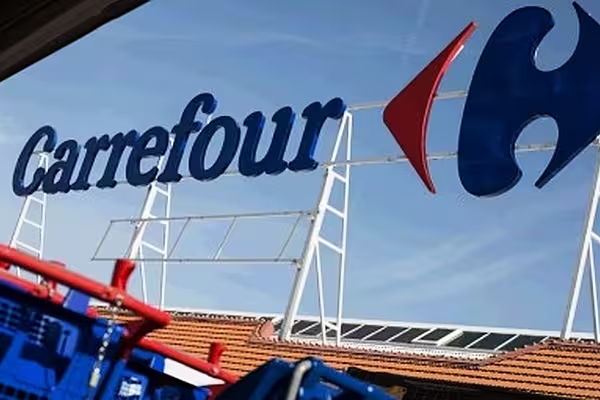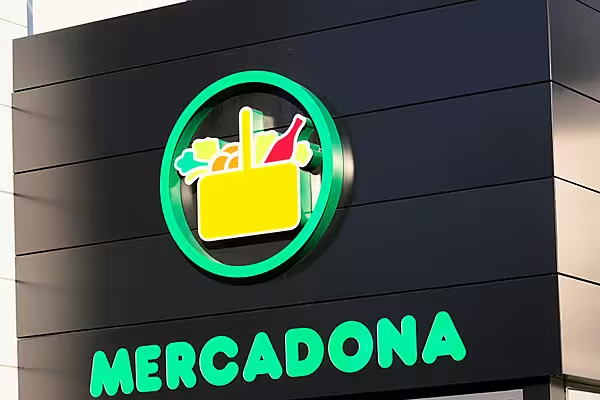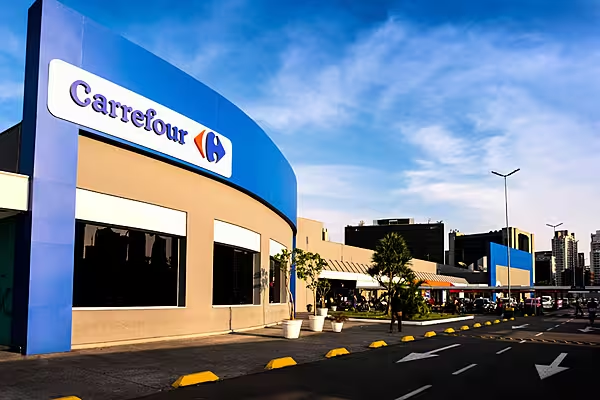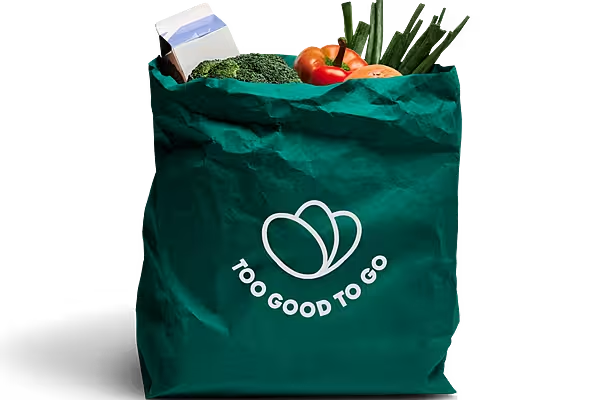Retail giant Carrefour is seeking to raise the bar for digitally enhanced shopping with its new Carrefour Flash 10/10 concept. Stephen Wynne-Jones caught up with Nicolas Safis, group innovation director, Carrefour, to learn more. This article first appeared in ESM Issue 1 2022.
In November, French retail giant Carrefour announced the evolution of its ‘Carrefour 2022’ growth strategy, unveiling plans to become a ‘data-centric, digital first’ business by accelerating its omnichannel presence and building customer engagement through a variety of digital channels.
The past few months have seen the first steps of this approach. The group signed a strategic partnership with Meta (formerly Facebook), rolled out a new rapid delivery service (Carrefour Sprint) alongside Uber Eats and Cajoo, and introduced the Carrefour Links digital marketing platform.
Amidst all this activity, Carrefour also unveiled a new-store concept, Carrefour Flash 10/10, in Paris’s eleventh arrondissement, which promises shoppers the ‘most accessible and fastest shopping experience ever’.
Developed in collaboration with Californian start-up AiFi, it has much in common with other cashless store formats that have cropped up across the Continent over the past couple of years, with one core difference: there’s no need to download a dedicated app prior to entry.
“It’s important to start by saying that this is not an autonomous, unmanned store,” Nicolas Safis, group innovation director at Carrefour, tells ESM. “We describe it as a ‘connected’ store – a typical store that has been upgraded with new technologies.”
Developing The Concept
Carrefour Flash 10/10’s motto is that it takes ‘10 seconds to shop and 10 seconds to pay’, with the shopper’s journey tracked as s/he makes his or her way around the store. Prior to launch, it was tested at the retailer’s head office in Massy for more than a year, during which time it was refined, based on feedback from employees.
“This isn’t something that has emerged in the past couple of months. It’s the culmination of a long project, which really started at the end of 2019,” says Safis, a former McKinsey consultant who took on his current role in March of last year. “During that time, we have seen autonomous and unmanned store formats pop up around the world, and we have been improving our concept all the time. Now, both the technology and our customers’ understanding are mature enough for us to put this in the public arena.”
During the test period, Carrefour honed in on two core areas. The first was around accuracy.
“When we initially launched in Massy, the accuracy rate was around 60%,” says Safis. “Now, it’s 96%.”
The second area was around the customer journey and overall user experience.
“Now, in one click, you can pay with your credit card or contactless payment and leave the store,” he says. “Also, the technology has evolved. At the start of the journey, there were these big, monolith-type units that were required to complete the checkout process. Now, that has been concentrated into the size of a small tablet.”
Customer Feedback
Feedback from customers played a fundamental role in how the concept was developed, with Carrefour asking its shoppers to define their perfect customer journey.
“Firstly, they want to be able to enter and leave the store freely, with no need to download an app in advance, for example,” says Safis. “Secondly, they said that they don’t necessarily trust big companies – not specifically Carrefour, but big companies in general. With that in mind, they want to know what they have paid before they leave the store – a real-time receipt, in other words – rather than leave the store, get home, and receive a receipt later.
“These are two key elements that are common for most customers that we have interviewed at Carrefour, and so the technology has been tailored around these two key pillars.”
Technology Structure
In the absence of an app or QR code for entry, Carrefour Flash 10/10 relies on a network of 60 HD cameras and 2,000 sensors, located around the store, that convert each customer into an anonymous avatar. Once a product is removed from the shelf, a sensor on that shelf correlates with the signal from the camera network to allocate that purchase to that specific shopper, but in a busy supermarket environment, how can the system be sure that it is tracking the correct individual’s purchases?
“This is one of the use cases that we are now able to manage following the one-year test process at Massy,” says Safis. “The camera is granular enough to recognise, say, part of the arm of one individual, so if you are reaching for a product on the top shelf and somebody else is reaching for a product on the bottom shelf, it associates the correct product with the correct customer.
“When it comes to the checkout process, this anonymous avatar makes his or her way to the checkout tablet, the contents of their basket are displayed in real time, and they can pay and leave the store.”
Unlike other ‘unmanned’ stores, Carrefour Flash 10/10 has in-store personnel on hand to offer advice and assist the shopper, not to mention performing the other tasks typically associated with a supermarket – keeping the sales area clean, restocking the shelves, servicing click-and-collect, and so forth.
“One thing they don’t do any more, however, is sit at a checkout desk, scanning products,” Safis adds.
Strategic Location
The location of the initial Carrefour Flash 10/10 concept store is also notable. Paris’s eleventh arrondissement, which is home to Opéra Bastille and the cosmopolitan Rue Oberkampf and Rue de Charonne, is one of the city’s busiest areas, making it a perfect testing ground for a rapid-fire shopping format.
“It’s a high-traffic part of Paris, with lots of people passing by on their way to work or on the way home at the end of the day,” says Safis. “The common thread that links all of these people is that they want to do their shopping fast.
“When you’ve been in work all day, you don’t want to have to queue for 20 minutes in a store to buy your coffee for the following morning. With Carrefour Flash, it takes ten seconds to shop, ten seconds to pay, and leave the store.”
It’s not the first time that Carrefour has adopted the ‘Flash’ moniker for a retail concept. The retailer previously unveiled a ‘Flash Scan & Go’ concept in Brazil in March 2021, where customers can use their smartphones to shop and pay. According to Safis, however, this is a different concept.
“To use the [Brazil] service, you need to download an app, you scan a QR code, and then you scan all the products that you want to buy. It’s enabled us to build a presence in places where there is no Carrefour right now, whereas Carrefour Flash 10/10 is more about retrofitting existing stores. There’s no overlap between both, and we’ve developed them in parallel.”
Looking Ahead
As to the next steps for Carrefour Flash 10/10? According to Safis, the retailer plans to continue to test the concept for the time being, before making a decision “at some point in 2022” as to whether it plans to deploy it further.
“Right now there is no roll-out plan, but the level of profitability generated this year will be key for us to evaluate and assess,” he says. “Also, the cost of the technology is reducing every quarter.”
In broader terms, Carrefour sees the Flash concept forming part of a wider digital infrastructure that meets the needs of an increasingly omnichannel customer.
“Overall, the objective is to keep transforming and serving our customers better, using and leveraging data to become more personalised, more flexible, and more targeted,” says Safis. “We’ve been working on digitising our stores to enhance productivity, to improve the customer experience, and to increase convenience, and Carrefour Flash is the perfect example of that.”
© 2022 European Supermarket Magazine – your source for the latest Retail news. Article by Stephen Wynne-Jones. Click subscribe to sign up to ESM: The European Supermarket Magazine.















